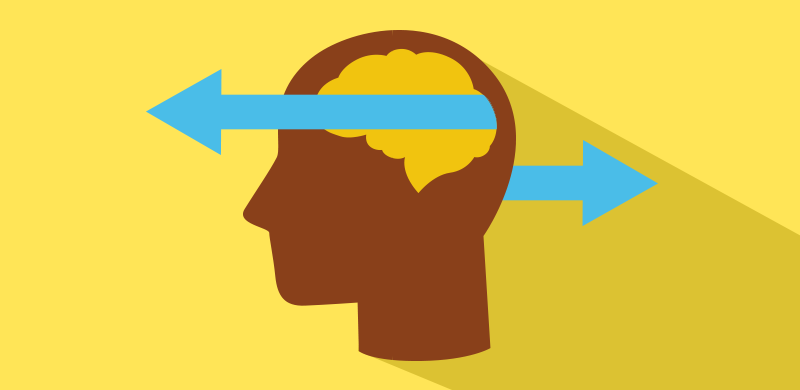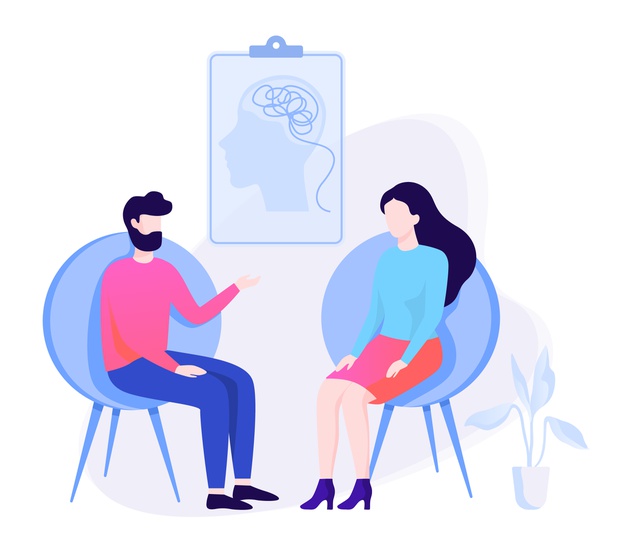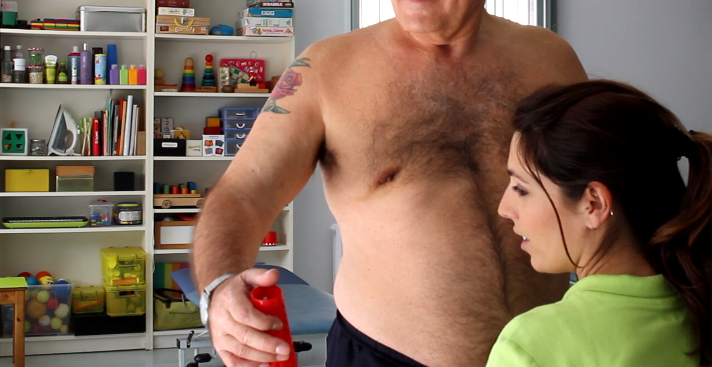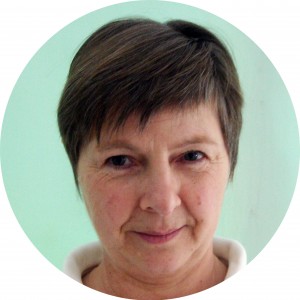Sorry, this entry is only available in European Spanish and Catalan.
(Español) ¿Es beneficioso practicar deporte después del ictus?
Cognitive flexibility: recovery key after a brain injury
Cognitive flexibility
Cognitive flexibility refers to the mental ability to switch between various different responses (whether thoughts or behaviors), depending on the demands and the situation in which we are. For the human being, the key to a good functioning in any of our day-to-day tasks, is this. On the contrary, being obsessed and rigid, will bring serious problems adapting to the constant changes that life offers us. For example, when we are solving a problem, flexibility helps us find various alternative solutions to do it. It also allows us to modify a plan of an unexpected event , or it helps us understand other people’s point of view. Other times, flexibility helps us to stop thinking about our concerns, in order to perform other, more adaptive behaviors or thoughts. Therefore, flexibility is not only important to adapt to various day-to-day events, it also helps us promote greater psychological and emotional well-being.
Cognitive flexibility and brain demage
One of the most common disorders in brain damage is a lack of cognitive flexibility. It can be affected on many levels, even have severe consequences. When a great flexibility difficulty is detected, the person may even have trouble dropping one task and switching to another. Other times, it happens when the person is solving a problem, he applies the same strategy repeatedly, causing them to fail over and over again and not be able to learn from their mistakes or generate an alternative response.
The difficulty in being flexible causes significant strain for the person who has suffered a brain injury, and for their family, since it generates great frustration by not being able to adapt to an environment that is in constant transformation such as life.
Rehabilitation
Aware of this, at the Neurorehabilitation Clinic, we focus on the rehabilitation of cognitive flexibility beyond the improvement of an isolated cognitive deficit, but we incorporate it in an integral way in the rehabilitation process. We know that it is a key process for adapting to the change that the person is experiencing after brain damage, and we know that greater flexibility will strongly help to achieve greater functionality and well-being in the person.

AUTOR: DIANA FLAQUÉ
How can Neuropsychotherapy help people who have suffered brain injury and their families?
Neuropsychotherapy
Neuropsychotherapy is the use of psychotherapy in order to help people with brain injury or other neurological diseases. The principal goal is reduce emotional pain and restore the person’s sense of life. Neuropsychotherapy promote acceptance in the new situation and boost a committed and attitude to life.
Suffering brain injury is a drastic life change for the person and his or her family. At this time, the task of facing a process of grief or loss begins. This implies the redefinition of the self-concept to align it with the new reality. A self-concept that will be influenced by motor, cognitive, behavioral and/or emotional deficits that they have developed due to the injury. This reality can break person previous life project and affect considerably their self-esteem. Several authors state that this grieving process is like the one that we can suffer by the loss of a loved one, since it would go through the same processing stages: denial, anger, negotiation, depression, and acceptance.
Early stage
Often, in the early severe stages after a brain injury, the person is not aware of the difficulties and their real capabilities. This is because the injured brain wrongly processes this information (it should not be confused with a denial response, where the person is aware but does not accept it). Therefore, a first stage of Neuropsychotherapy will be to improve the deficits awareness, otherwise there will be difficulties to rebuild a life project according to the new reality.
Second stage
The second stage is about accepting and facing their condition after brain injury. At the Neurorehabilitation Clinic, we use techniques from evidence-based cognitive-behavioral and third-generation therapies. There are focused on helping the person to perceive brain injury as a part of their life and not as a whole.
Acceptance and Commitment Therapy
Acceptance and Commitment Therapy, is one of the approaches we use in Neuropsychotherapy. This one, among other things, helps the person to act in the direction of his or her personal values creating a meaningful life project. The person is invited to think about what kind of person he wants to be from now on his vital areas (family, intimate relationships, parenthood, work, education, leisure, health, …). This involves the acceptance of that pain is inherent in life, but despite this pain, we can continue building a life that is valuable to us.
do una vida valiosa para nosotros.

(Español) ¿De qué hablamos cuando hablamos de dormir?
(Español) ¿El Espolón Calcáneo, es la causa de mi dolor en la planta del pie?
Visual impairment and balance in stroke
Some time ago we have told you some things about visual alterations as a sequel to a stroke. Sequelae such as a reduced visual field or double vision (diplopia) are frequent in patients with stroke. However, its importance is centered on the initial evaluations of the neurological examination.
These visual alterations, sequelae of the stroke, usually correct themselves over time. But in many cases, they remain directly and indirectly affecting the patient’s recovery.
We know that human beings make great use of the visual system to guide their movement and guide their motor actions. After all it is a sensory system that provides a lot of information to the nervous system. Well, if that visual information reaches our brain altered or incomplete, we can suspect that the result of our motor planning will also be altered.
On the other hand, we know that the visual component is of great help to be able to maintain balance. Mostly due to peripheral vision and coordination between peripheral vision and central vision. Peripheral vision, which is responsible for giving us spatial orientation, is often reduced or altered and therefore influences our balance both sitting, standing, and while walking.
Knowing the importance of the visual system, in the Neurorehabilitation Clinic, we carried out an observational study on the visual affectations of patients with stroke and their balance disorders. You can consult the work at the link: https://www.fisioterapeutes.cat/es/comunicacion/revista-cientifica/xvii#visor/.
The work, prepared by Carina Salgueiro, is entitled “Visual impairment and balance in a stroke: An observational study”, it is easy to read for both professionals and curious users.
Bettina Paeth and the Bobath Concept
In 1980 she finishes her studies of physiotherapy in the University Justus Liebig (Germany)and from that moment, she devotes herself to neurology. Her training in the Bobath concept started in 1981 with Patricia Davies (Bad Ragaz, Switzerland) and continued with the advanced course with Drs, Berta and Karel Bobath.
She was given the Bobath Tutor degree in 1986 by Patricia Davies. She continued her training as advanced tutor with Patricia Shelley (United Kingdom), Anne-Marie Boyle, Frauke Biewald and Jürgen Grete (Germany), Mary Lynch-Ellerington (Germany and Spain). She was awarded the advanced tutor degree in 1986 by Mary Lynch-Ellerington.
In 2002 she has been qualified Bobath Senior Tutor. She studied with tutors Mary Lynch-Ellerington (United Kingdom), Frauke Biewald (Germany), Jürgen Grete (Germany), Anne-Marie Boyle (Switzerland), Louise Rutz-LaPitz (Switzerland), Nora Kern (Germany) and Elia Panturin (Israel), in order to widen her knowledge and to have influences from different countries.
In 1996 she was one of the founding members of the Spanish Association of Bobath Therapists and she founded the so-called “Attendees Group” in the same year. She also took part in the publication of the book “Neurorehabilitation in Multiple Sclerosis” (2007) and other books in German.
Her training is mainly in the Bobath concept in adults. Nevertheless, she attended the Bobath couse for children affected by cerebral palsy in the Bobath Centre in London (United Kingdom), the Vojta therapy, Kabat, Brunkow, Functional Kinesitherapy (Klein Vogelbach), Motor Control/Motor Learning (Carr, Shepherd), Halliwick (McMillan), Schaarschuch-Haase, Maitland and Neurodinamics in order to have means and strategies of treatment for patients needing other techniques than Bobath’s.
Since 24 years ago, she gives courses of the Bobath concept: Introduction course, Normal movement, Basic course of Examination and Treatment of adults with neurological disorders and different advancd courses in Spain, Germany, Switzerland, Portugal, Croatia, Poland,Argentina and Chili. At present she is consultant in our Rehabilitation Clinic, that she herself founded in 1994. She is teacher in the Physiotherapy University School Gimbernat (UAB, Barcelona, Spain) and participates frequently in different symposia and congresses, both National and International.
Rehabilitation and physiotherapy in the treatment of stroke
Apart from words, we also send you this video. In this video, we talk in a simple and summarized way about the current challenges in the rehabilitation and treatment of patients with stroke.
The diversity among people who suffer a stroke
You already know that there is no cure or only solution for stroke. People affected by this problem must continue working to recover from the consequences (eg paralysis) and overcome the disability.
It is common for people who suffer a stroke, or commonly called stroke or brain injury, are inserted in rehabilitation programs, specifically neurorehabilitation. In these programs, whether public or private, the role of physiotherapy is very important since most of the sequelae are physical, motor, sensitive, etc. It is estimated that they represent more than 80% of the sequels.
Challenges of rehabilitation
Be it neurological physiotherapy or neurology, or another, we have our challenges. Why can’t we give a single answer to patients? Why is there no single solution or treatment? Why can’t it be as simple as casting a broken arm?
Many people call us and write to ask if what they are currently doing is the right thing to do, even physiotherapists from other fields ask us what they should do with their new patient who has come to the consultation for paralysis due to a stroke.
It is difficult to give a simple answer because stroke patients are different from each other, they are heterogeneous. For example, the same type of stroke, in the same region of the brain, can lead to different sequelae in different people. So we already start from a disadvantage that is there are no typical or equal patients.
Neurological physiotherapy
Regarding the techniques in neurological physiotherapy, the most current studies point to the use of techniques such as well-advised neuromuscular electrical stimulation and, together with other specific recommendations, the training of tasks adapted to specific therapeutic objectives, etc. In addition, the use of specific and exclusive techniques of neurological physiotherapy is also recommended.
Neurorehabilitation
It is very important to do physiotherapy and rehabilitation treatment in specialized centers and with trained, qualified and experienced professionals.
The role of physiotherapy in the world of neurology

Physiotherapy is a method of treating some diseases, injuries, and other discomforts that patients may have. Included from the area of neurology.
Physiotherapists are healthcare professionals responsible for conducting assessments, clinical and functional diagnoses. And to apply treatment techniques or plan therapeutic intervention approaches.
Its objective is to reduce and solve the problems and alterations that patients present. In a more summarized way, the physiotherapist is dedicated to the promotion of health and the prevention of disease.
Neurological Physiotherapy:
Specifically, in the area of neurology, treatment of neurological diseases, and neurorehabilitation, physiotherapists play a very important role in recovery. Mostly they talk about physical, sensitive, motor, and functional alterations and disorders.
These problems can range from the loss of strength after a surgical operation, such as the treatment of motor paralysis due to a stroke.
Neurological physiotherapy, although currently in Spain is not officially considered a specialty, is quite established in Catalonia. This allows us to appreciate the work of physiotherapy in neurology and to distinguish physiotherapists with specific training in neurology, neuroscience, and neurorehabilitation. And without forgetting the professional experience in this area of action, which is so diversified and complex.
Training in physiotherapy and neurology:
Physiotherapists, who are exclusively dedicated to the world of neurology. In other words, physiotherapists treat patients with lesions in the nervous system (eg, acquired brain damage, stroke, brain tumor, multiple sclerosis, Parkinson’s disease, among others). They are physiotherapists who usually have extracurricular training (postgraduate, master, doctorate, professional health training in assessment and treatment techniques, etc.) related to neurology.
Some examples of this training can be initial, basic, or advanced training in the Bobath Concept, the Perfetti Method, new technologies in neurorehabilitation, functional electrical stimulation, and many more.
In Catalonia, there are several training offers in neurological physiotherapy. Even the professional association of physiotherapists of Catalonia, recognize the dedication of their physiotherapists and have available to the public, information for professionals and patients seeking help.
